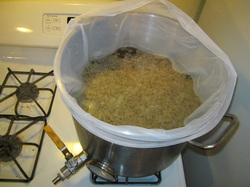
So after my incredibly long and trying decoction brew day a while back I wanted something easy to do so I wrote up a quick recipe for a 2.5 gallon APA using some 2-Row mixed with about 7.5% each of Biscuit Malt and C-20. For the hops I figured I would try out a couple of new ones and decided on Palisade which I've gathered is a neutral bittering hop and Australian Galaxy for their passion fruit flavor and citrus aromas. Keeping with the theme of simplicity I used straight up, good old Safale US-05.
There are so many good write ups out there that I'm not going to delve into process much but rather just post some links and discuss a couple reasons why I enjoy the BIAB process.
I personally like these two explanations because they were all about stove top BIAB which is what I do.
http://www.northernbrewer.com/connect/episode/brewing-tv-episode-54-jakes-got-a-brand-new-bag/
http://homebrewmanual.com/brew-in-a-bag/
This one was also great and was for larger batches outside:
http://www.homebrewtalk.com/f36/biab-brewing-pics-233289/
So why do I love BIAB? I'll give you three quick reasons.
1st: It's super easy! With an hour long mash, an hour long boil and all the heating and cooling time in between the brew day really isn't much shorter but it feels easier for some reason. Perhaps its because I don't have to lug all my cooler gear from up in the basement and the burner and propane from the garage. Perhaps it's the fact that I get to sit in the comfort of my own home and just hang out while it works its magic on the stove top. Perhaps it's how easy cleaning and putting away equipment is. Or most likely it's the combination of all four.
Either way, BIAB is simple. Especially when employing a full volume mash without a sparge. I hit all of my numbers perfect with an expected brewhouse efficiency of 60% and I'm sure I could have gone higher had I sparged a bit but I was once again shooting for something quick, easy and painless. However, bumping my efficiency up a handful of points and saving a dollar or two on grain just doesn't seem worth the extra heating and effort when that is what I am specifically trying to avoid.
2nd: It let's me brew more. Now I know not everyone is into this seeing that people are strapped for time so people moving from five gallon batches tend to move to ten or fifteen rather than move down to three or less. But for me I like the process and more importantly I like experimenting with ingredients and recipes. I feel safer trying out new things on small stages rather than jumping straight to a five gallon recipe. So far small batches of BIAB have allowed me to test out a Smoked Imperial Stout, an English Barleywine, my Hybrid Citraburst, and I have a slew of other recipes waiting for testing.
3rd: While this wasn't my experience, I could see BIAB being a great introduction to all grain brewing. It is cheap, easy and a step up from extract brewing. Instead of jumping off the deep end it would offer a brewer the chance to spend a few bucks on a proper bag and maybe a bit more on a larger pot which they will need anyways for all grain brewing or full volume extract brews. It potentially could be a nice intermediate step.
There are so many good write ups out there that I'm not going to delve into process much but rather just post some links and discuss a couple reasons why I enjoy the BIAB process.
I personally like these two explanations because they were all about stove top BIAB which is what I do.
http://www.northernbrewer.com/connect/episode/brewing-tv-episode-54-jakes-got-a-brand-new-bag/
http://homebrewmanual.com/brew-in-a-bag/
This one was also great and was for larger batches outside:
http://www.homebrewtalk.com/f36/biab-brewing-pics-233289/
So why do I love BIAB? I'll give you three quick reasons.
1st: It's super easy! With an hour long mash, an hour long boil and all the heating and cooling time in between the brew day really isn't much shorter but it feels easier for some reason. Perhaps its because I don't have to lug all my cooler gear from up in the basement and the burner and propane from the garage. Perhaps it's the fact that I get to sit in the comfort of my own home and just hang out while it works its magic on the stove top. Perhaps it's how easy cleaning and putting away equipment is. Or most likely it's the combination of all four.
Either way, BIAB is simple. Especially when employing a full volume mash without a sparge. I hit all of my numbers perfect with an expected brewhouse efficiency of 60% and I'm sure I could have gone higher had I sparged a bit but I was once again shooting for something quick, easy and painless. However, bumping my efficiency up a handful of points and saving a dollar or two on grain just doesn't seem worth the extra heating and effort when that is what I am specifically trying to avoid.
2nd: It let's me brew more. Now I know not everyone is into this seeing that people are strapped for time so people moving from five gallon batches tend to move to ten or fifteen rather than move down to three or less. But for me I like the process and more importantly I like experimenting with ingredients and recipes. I feel safer trying out new things on small stages rather than jumping straight to a five gallon recipe. So far small batches of BIAB have allowed me to test out a Smoked Imperial Stout, an English Barleywine, my Hybrid Citraburst, and I have a slew of other recipes waiting for testing.
3rd: While this wasn't my experience, I could see BIAB being a great introduction to all grain brewing. It is cheap, easy and a step up from extract brewing. Instead of jumping off the deep end it would offer a brewer the chance to spend a few bucks on a proper bag and maybe a bit more on a larger pot which they will need anyways for all grain brewing or full volume extract brews. It potentially could be a nice intermediate step.

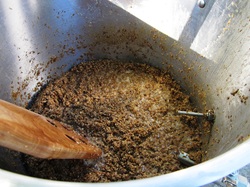

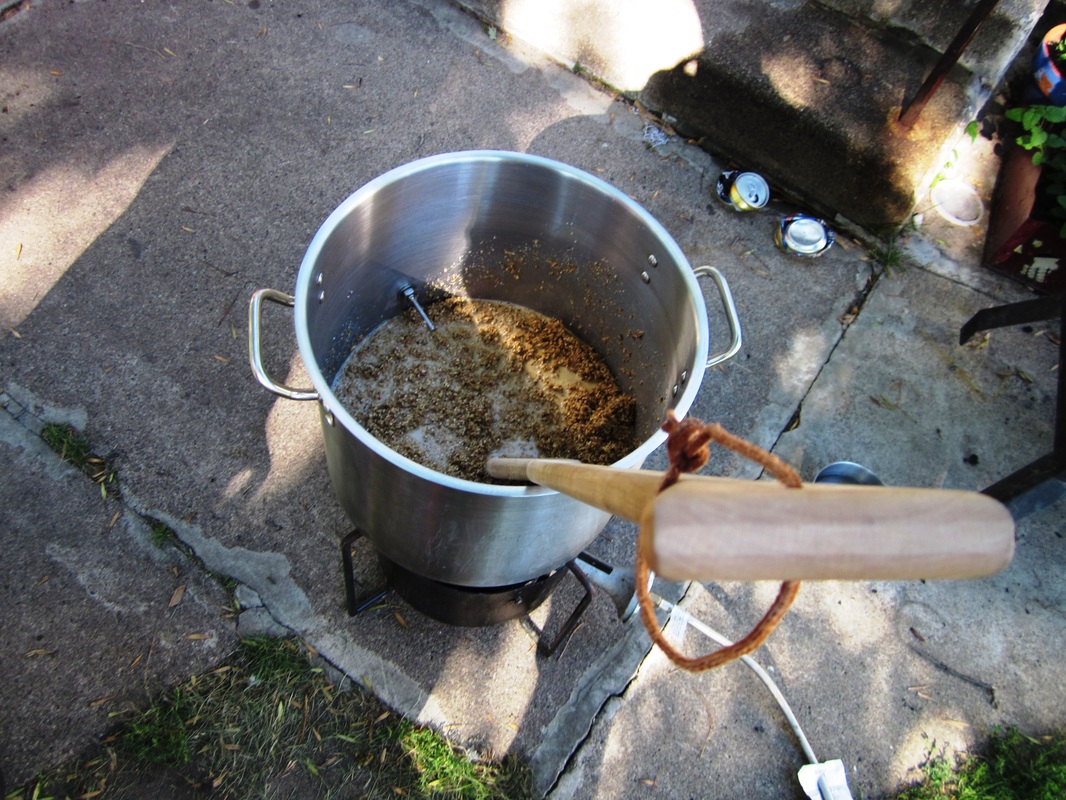
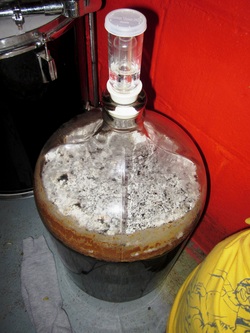
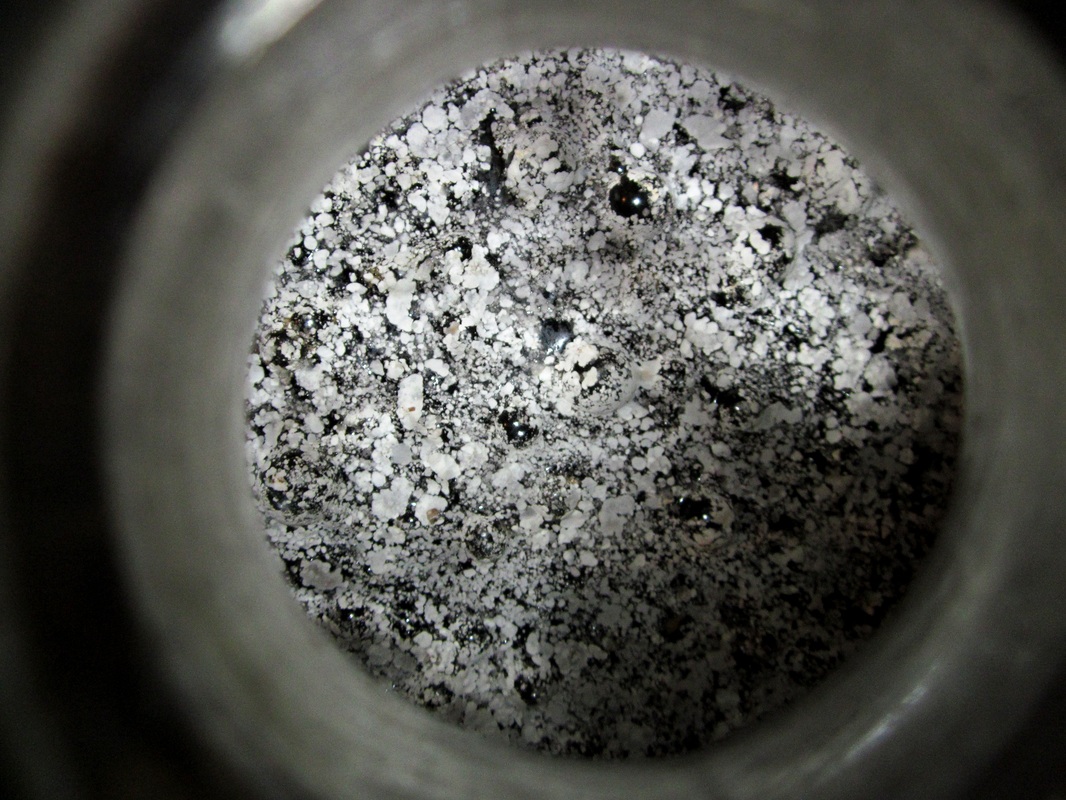
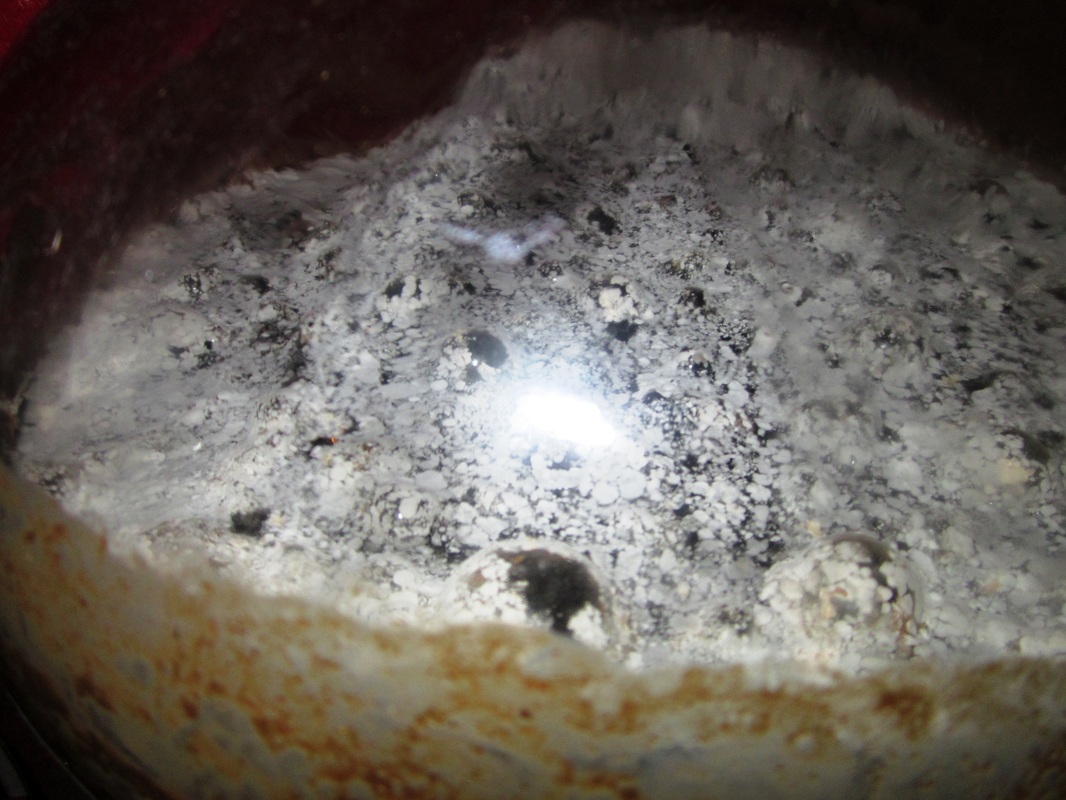
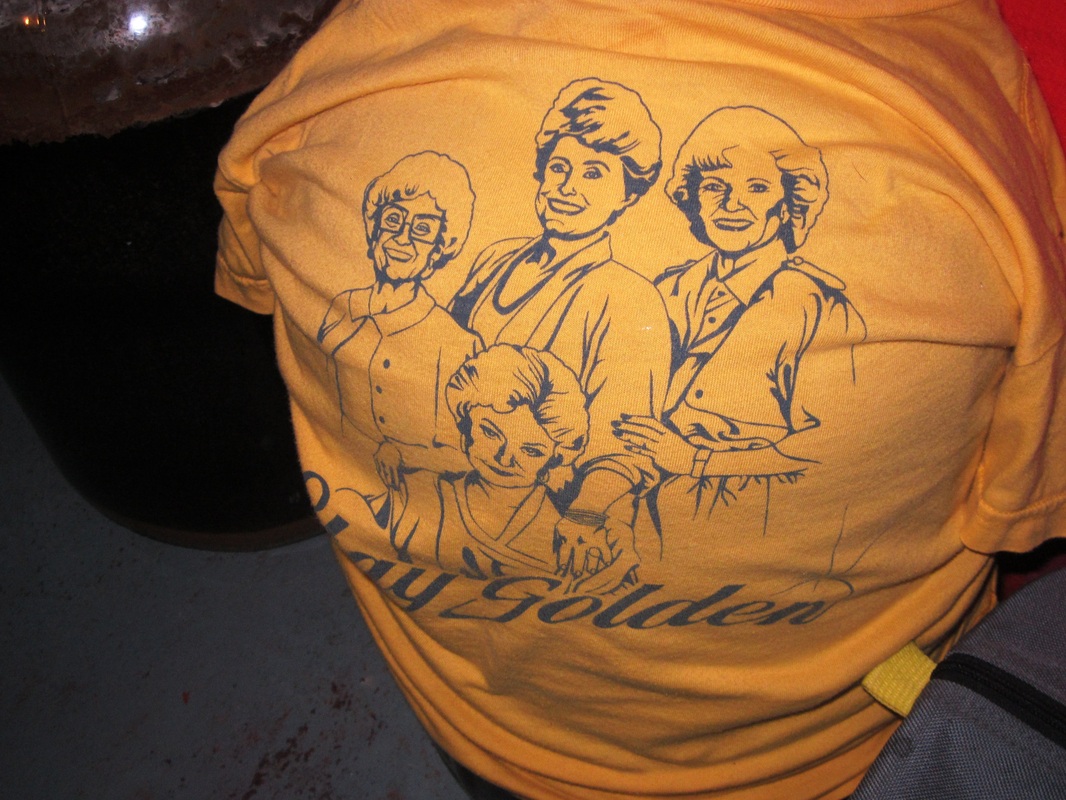
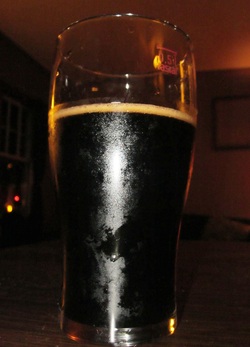
 RSS Feed
RSS Feed